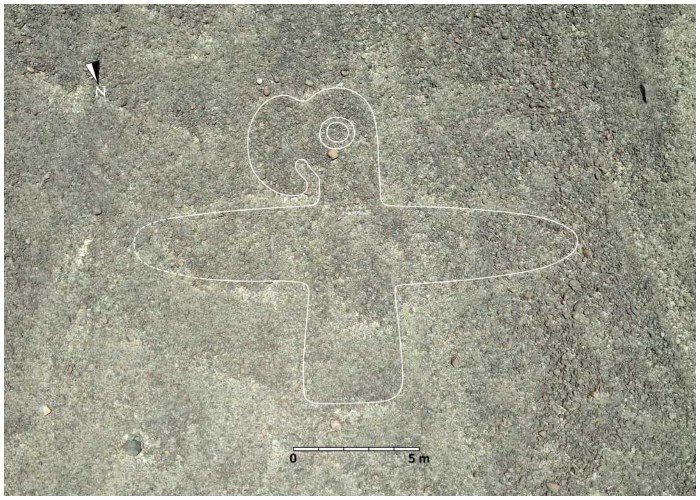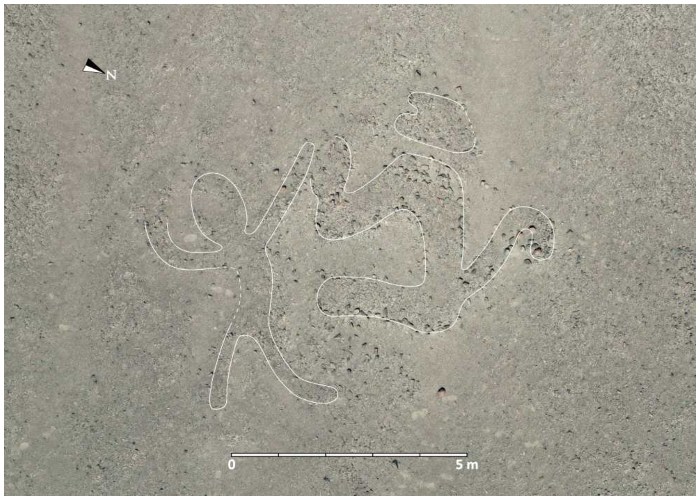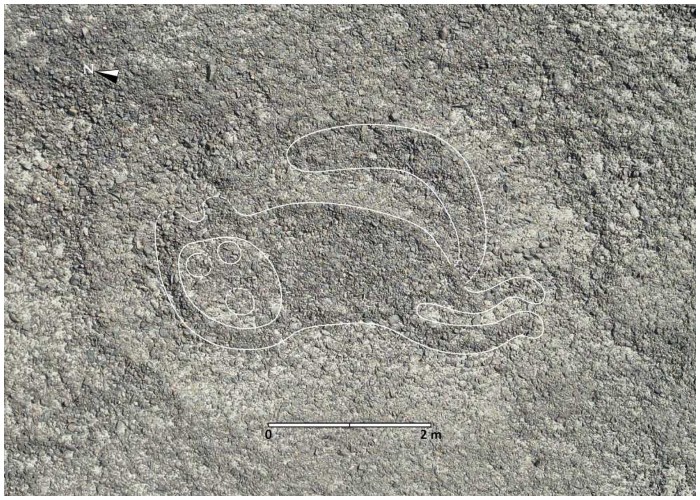In an astonishing breakthrough, scientists have uncovered more than 300 new Nazca Lines in Peru’s Nazca Desert, adding to the ever-growing list of these mysterious ancient geoglyphs. With the help of cutting-edge artificial intelligence (AI), these figures were unearthed in just six months, nearly doubling the number of known geoglyphs.
The new lines feature alien-like humanoid figures, decapitated heads, domesticated animals, and even a knife-wielding orca, sparking intrigue and raising fresh questions about the civilization behind them. Created between 200 B.C. and A.D. 500 by the ancient Nazca people, these large carvings continue to captivate researchers, adding depth to our understanding of pre-Incan Peru.
The Role of AI in Discovering the Nazca Lines
The Nazca Lines have fascinated the world for nearly a century, with their massive size and complex shapes being visible primarily from the sky. First rediscovered by airplane passengers in the 1920s, the lines have since been studied using satellite imagery and aerial photography. However, as more geoglyphs were identified, the rate of discovery began to slow, with many remaining too faint to be detected by the naked eye.

In 2022, researchers turned to AI technology to accelerate the discovery process. The AI model, trained to recognize the faint outlines of the geoglyphs in satellite images, has proven to be 20 times more efficient than manual methods. By scanning large areas quickly, AI has enabled researchers to pinpoint previously overlooked locations, where faint lines were hidden in plain sight. In the span of six months, from September 2022 to February 2023, the AI-guided researchers confirmed the existence of 303 new geoglyphs, a remarkable achievement that highlights the power of technology in archeological exploration.
The Fascinating New Discoveries
The newly discovered Nazca Lines add another layer of mystery to the ancient civilization that created them. These geoglyphs include a range of figures, from abstract humanoid shapes to decapitated heads, domesticated animals like cats and birds, and even scenes of human-animal interactions. One of the most bizarre finds was a 72-foot-long killer whale depicted holding what appears to be a knife. This strange and unexpected imagery has baffled researchers, sparking new debates about the meanings and purposes behind these carvings.
The geoglyphs’ diversity is striking, with the new additions showing an intricate mix of artistic themes. Decapitated heads were significant in the Nazca culture, possibly symbolizing ritual sacrifice or warfare. The presence of both domesticated animals and wild creatures, such as whales and birds, further supports the idea that these figures may have been used for spiritual or ceremonial purposes, connecting the Nazca people with both the natural and supernatural worlds.
Two Types of Nazca Lines: Relief vs. Line Geoglyphs
This latest discovery has also helped researchers distinguish between two main types of Nazca Lines: relief-type geoglyphs and line-type geoglyphs. Relief-type geoglyphs are smaller, more intricate, and often depict humans or domesticated animals. These figures tend to be located near ancient trails, leading researchers to believe that they were intended for passersby to see, possibly as part of religious or ceremonial activities. In contrast, line-type geoglyphs are larger, covering more ground, and usually represent wild animals such as birds, fish, and whales. These geoglyphs are spaced evenly across the desert, suggesting that they were likely created for community-wide rituals or large-scale spiritual practices.

This division between relief-type and line-type geoglyphs not only helps categorize the shapes but also provides insight into the daily lives and belief systems of the Nazca civilization. The positioning and size of the geoglyphs indicate a highly organized society, one that used its natural landscape to represent cultural and religious ideas on a massive scale.
The Significance of the Nazca Lines
The Nazca Lines have long been a source of speculation. Their sheer size and visibility from above have led some to believe that they were created as offerings to deities or as astronomical markers. Others have suggested that the geoglyphs were part of a water ritual, a plausible theory given the Nazca people’s reliance on agriculture in the arid desert. The newly discovered figures, including animals and potential ceremonial scenes, only deepen the mystery, hinting at complex cultural practices that are still not fully understood.
What makes the discovery of these additional geoglyphs so exciting is that it opens up new lines of inquiry. Are these carvings simply artistic expressions, or do they serve a deeper religious or astronomical purpose? Why were such abstract and often strange figures, such as the decapitated heads or the knife-wielding orca, carved into the desert floor? As more geoglyphs are discovered, researchers hope to piece together the puzzle of why the Nazca civilization invested so much time and effort into creating these vast, enigmatic artworks.
Future Discoveries and Research
The AI model used in the recent study has already identified hundreds of other potential geoglyphs that the researchers have yet to explore, and scientists estimate that at least 250 more Nazca Lines may still be found. This ongoing exploration suggests that we are only beginning to uncover the full extent of the Nazca civilization’s creative output. Future research, combined with further AI-aided discoveries, will likely bring even more intricate and thought-provoking geoglyphs to light.

Moreover, as new lines are discovered, researchers are hoping to gain further insight into the Nazca people’s daily lives, religious beliefs, and social structures. The combination of modern technology and ancient artistry provides a fascinating look into a civilization that continues to captivate and mystify both researchers and the public.